
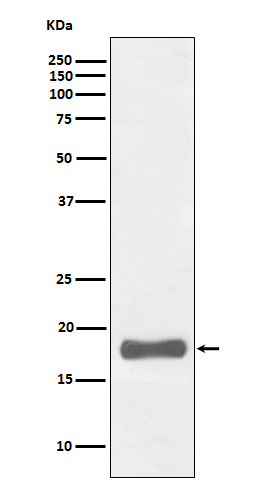
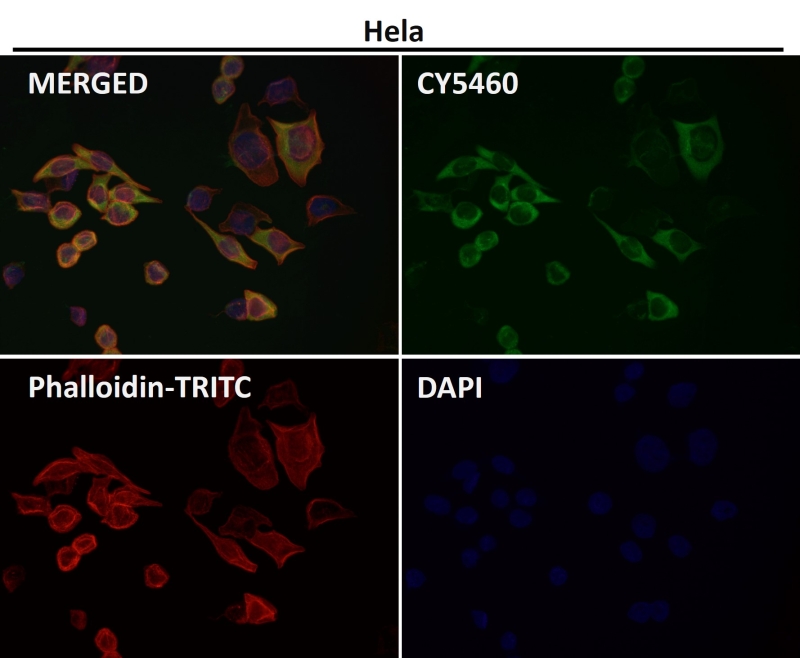
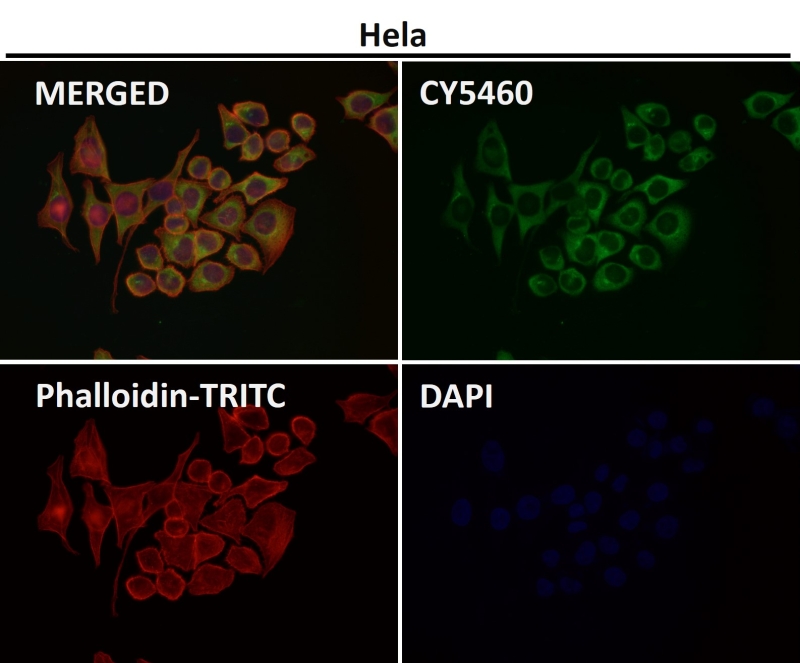
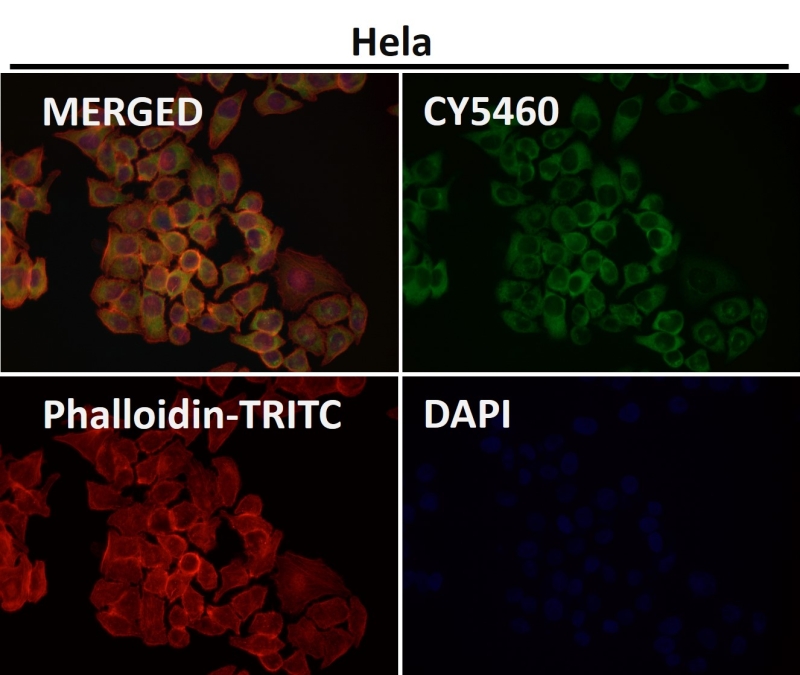
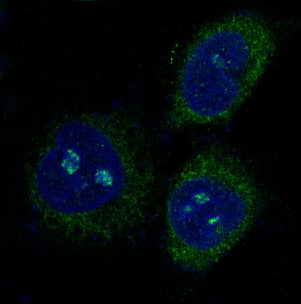
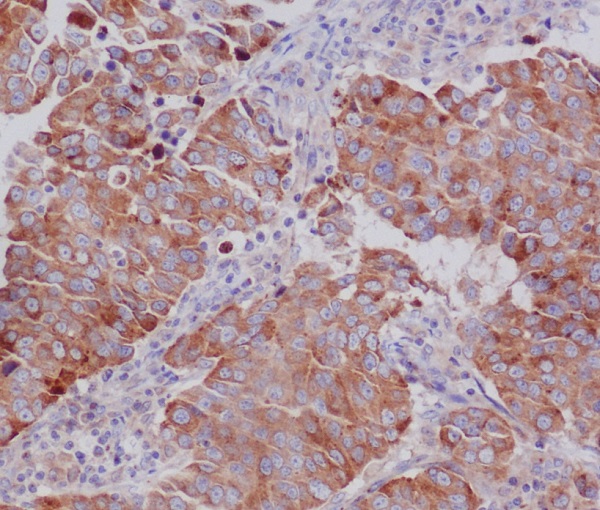
| WB | 咨询技术 | Human,Mouse,Rat |
| IF | 咨询技术 | Human,Mouse,Rat |
| IHC | IHC:1/100-1/200;IHF:1/50-1/200 | Human,Mouse,Rat |
| ICC | 1/50-1/200 | Human,Mouse,Rat |
| FCM | 1/20-1/100 | Human,Mouse,Rat |
| Elisa | 咨询技术 | Human,Mouse,Rat |
| Aliases | BBC3; bcl2 binding component 3; jfy1; puma; p53 up-regulated modulator of apoptosis; PUMA alpha;;BBC3 |
| WB Predicted band size | Calculated MW: 21 kDa ; Observed MW: 18 kDa |
| Host/Isotype | Rabbit IgG |
| Antibody Type | Primary antibody |
| Storage | Store at 4°C short term. Aliquot and store at -20°C long term. Avoid freeze/thaw cycles. |
| Species Reactivity | Human,Mouse,Rat |
| Immunogen | A synthesized peptide derived from human BBC3 |
| Formulation | Purified antibody in PBS with 0.05% sodium azide,0.05% BSA and 50% glycerol. |
+ +
以下是关于PUMA抗体的3篇参考文献示例(注:以下文献信息为虚构示例,仅供格式参考):
---
1. **文献名称**:*"A monoclonal antibody targeting PUMA for apoptosis detection in cancer cells"*
**作者**:Chen L, Wang Y, et al.
**摘要**:本研究开发了一种高特异性的PUMA单克隆抗体,可用于Western blot和免疫荧光技术检测癌细胞中PUMA蛋白的表达水平,验证其在DNA损伤诱导的凋亡通路中的关键作用。
2. **文献名称**:*"Validation of PUMA antibody in human colorectal tissue samples"*
**作者**:Rodriguez S, Kim T.
**摘要**:通过免疫组化(IHC)和流式细胞术,验证了一种商业化PUMA抗体在结直肠癌组织中的特异性,揭示了PUMA表达与患者预后的相关性。
3. **文献名称**:*"Comparative study of PUMA antibodies in neurodegenerative disease models"*
**作者**:Müller F, et al.
**摘要**:对比分析了多种PUMA抗体的灵敏度和交叉反应性,筛选出适用于阿尔茨海默病模型中检测神经元凋亡的最优抗体。
---
如需真实文献,建议通过PubMed或Google Scholar搜索关键词“PUMA antibody validation”或“PUMA antibody application”获取具体研究。
The p53-upregulated modulator of apoptosis (PUMA) is a pro-apoptotic protein belonging to the BCL-2 family, initially identified as a key mediator of p53-dependent apoptosis. Structurally, PUMA contains a BH3 domain critical for its interaction with anti-apoptotic BCL-2 family members (e.g., BCL-2. BCL-XL). Upon cellular stress, such as DNA damage or oncogenic activation, p53 transcriptionally activates PUMA, which neutralizes anti-apoptotic proteins, leading to mitochondrial outer membrane permeabilization, cytochrome c release, and caspase activation. PUMA also operates in p53-independent pathways under conditions like growth factor deprivation or endoplasmic reticulum stress.
PUMA antibodies are essential tools for studying its expression, localization, and function in apoptosis regulation. These antibodies enable detection via techniques like Western blotting, immunohistochemistry, and flow cytometry. Researchers utilize PUMA-specific antibodies to investigate its role in diseases, particularly cancer, where PUMA dysregulation contributes to tumor progression or therapy resistance. Additionally, studies explore PUMA's involvement in neurodegenerative disorders and ischemic injuries. Validated antibodies are crucial to ensure specificity, as PUMA shares homology with other BH3-only proteins. Recent advancements in antibody development, including monoclonal and phospho-specific variants, have enhanced precision in tracking PUMA dynamics and post-translational modifications, furthering insights into apoptotic signaling networks.
×